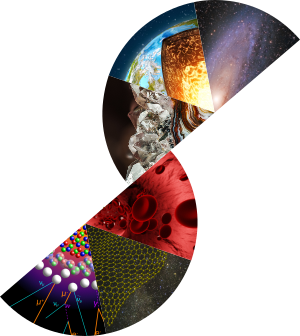Spin-dependent ultrafast THz emitters
Several scientific and industrial applications, such as spectroscopy[1], imaging[2], medicine[3], biology[4], material science[5] and security[6], now depend on terahertz radiation as a key instrument. The development of the overall magnetism domain and more specifically the physics of electron spin over the past 25 years have opened the doors to explore new potential and promising THz sources known nowadays as spintronic emitters. Contrary to the traditional THz sources like photoconductive antennas and optical rectification that exploits only the electrons charge[7], spintronic emitters take advantage of the spin angular momentum of electrons. They have emerged as attractive sources of terahertz radiation due to their high power, tunability, and compactness.
Spintronic emitters consist of a nanometric layered ferromagnetic (FM) / non-magnetic (NM) heterostructures that radiates, under near infra-red femtosecond pulsed laser excitation, a THz electric field by different spin-orbital coupling mechanisms[8]. This emitted THz electric field is detected by electro-optical sampling technique[9]. Our group were actively exploring the different contributions to the ultrafast spin to charge conversion in the well-known THz emitter CoFeB/Pt [10]. This heterostructure consist of a FM layer of cobalt-iron-boron (CoFeB) material and a NM layer of platinum (Pt), which has a strong spin-orbit coupling. In this thesis, I investigate the CoFeB/Pt spintronic emitters as well as other types of emitters such as cobalt (FM), CoFeB/Pt and CoFeB/MgO. In this presentation, I will introduce the underlying physics behind these emitters functionality. Then we will discuss the methodology and the main challenges to dissociate different overlapping spin-to-charge conversion mechanisms (inverse spin-hall effect, Anomalous Hall effect, Inverse Rashba-edelstein effect...). And we finish up by highlighting some results and future research directions.
1. Neu, J. et al. Tutorial: An introduction to terahertz time domain spectroscopy (THz-TDS). Journal of Applied Physics 124, 231101 (2018).
2. Mittleman, D. M. et al T-ray imaging. IEEE Journal of Selected Topics in Quantum Electronics 2, 679–692 (1996).
3. Zhan, X. et al. Revolutionary approaches for cancer diagnosis by terahertz-based spectroscopy and imaging. Talanta 259, 124483 (2023).
4. Markelz, A. G., et al Pulsed terahertz spectroscopy of DNA, bovine serum albumin and collagen between 0.1 and 2.0 THz. Chemical Physics Letters 320, 42–48 (2000).
5. Wu, W. et al. Controlling polarization of spintronic THz emitter by remanent magnetization texture. Appl. Phys. Lett. 121, 052401 (2022).
6. Yao, G. et al Terahertz active imaging radar: preprocessing and experiment results. EURASIP Journal on Wireless Communications and Networking 2014, 10 (2014).
7. Reimann, K. Table-top sources of ultrashort THz pulses. Reports on Progress in Physics 70, 1597–1632 (2007).
8. Seifert, T. S., et al Spintronic sources of ultrashort terahertz electromagnetic pulses. Appl. Phys. Lett. 120, 180401 (2022).
9. Wu, Q. et al Free‐space electro‐optic sampling of terahertz beams. Appl. Phys. Lett. 67, 3523–3525 (1995).
10. Levchuk, A. Probing and controlling coherent-phonon and spin-charge conversion in nanostructures with ultrafast visible and THz light pulses. (Le Mans Université, 2022).

 PDF version
PDF version
